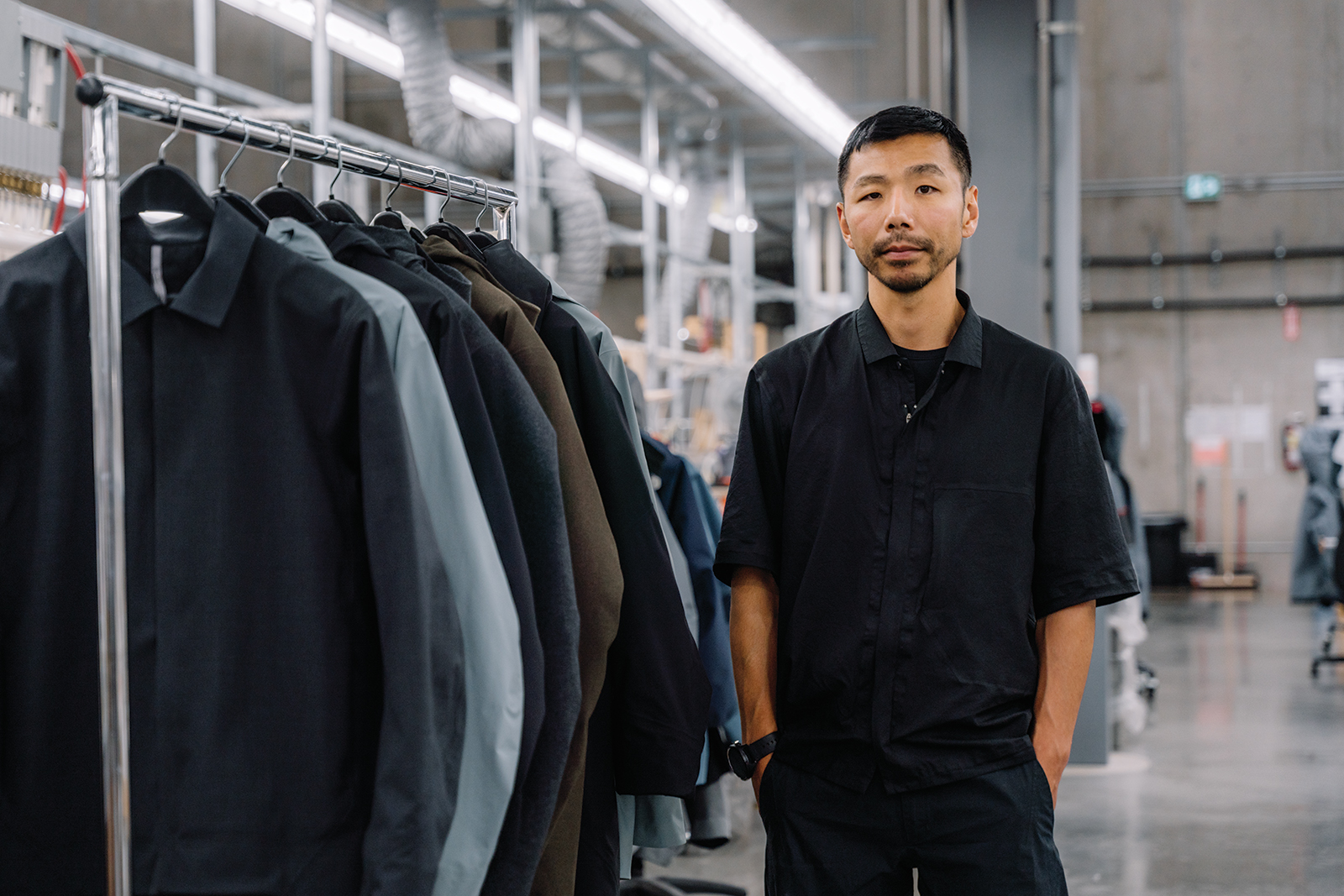
The Technician: Taka Kasuga on Arc’teryx and Veilance
At Arc’teryx and Veilance, Taka Kasuga is bringing technical apparel from the mountains to the masses.
As a kid in Japan, Taka Kasuga excelled at math and art. He considered pursuing a career in architecture, but after conducting a “personal strengths finder,” he announced to his parents at 13 his intention to become a fashion designer, “which was a very odd, weird, and crazy thing to declare.” But his declaration came true. Thirty years later, Kasuga is now the senior director, design, at Arc’teryx, the outdoor-gear brand based in Vancouver, while also overseeing Veilance, the company’s subbrand launched in 2009. “I like not just pure art, or pure science, but a combination of the two,” he says.
Kasuga’s ascendance to the top creative jobs at Arc’teryx feels almost predestined. He grew up in the countryside about a two-hour drive southwest of Hiroshima surrounded by the ocean and the mountains, environs that would shape his interest in functional, outdoor garments. Kasuga’s family is traditional; his father is a Shinto priest. Shintoism, Kasuga says, “is sort of like a religion in Japan, but it’s more to do with lifestyle.” As the oldest male heir, Kasuga was expected to succeed his father. “I had that pressure to think about. If I don’t want to succeed the family tradition, or conform into the societal system, then I had to come up with something. So it just definitely made me think about the future,” he says. “I found freedom in design, exploring different ideas and composing things in a new way that changes the perception of the people and how people behave, which was very, very interesting to me.”
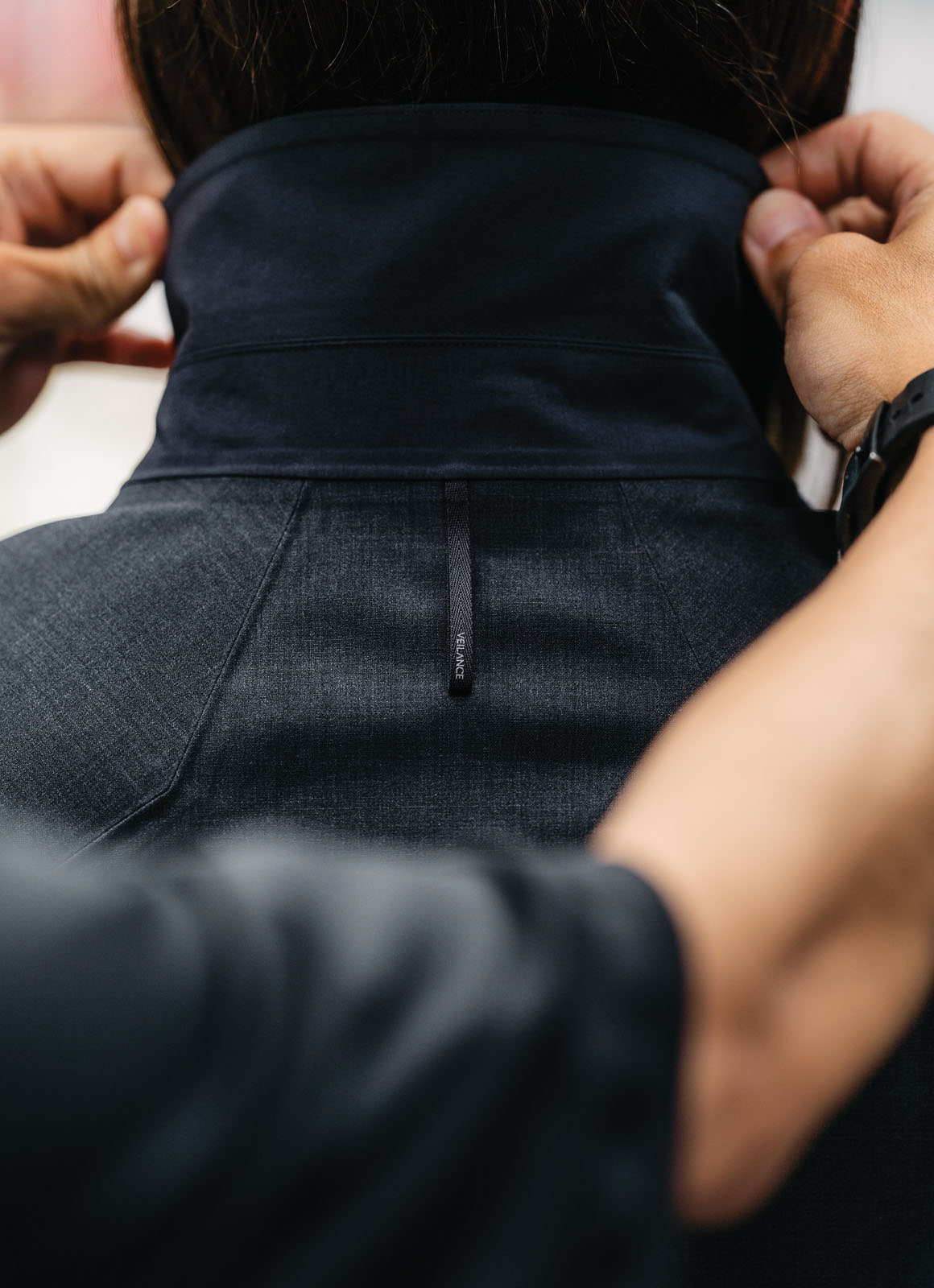
Taka Kasuga is animated by the art and craft of clothes-making.

Kasuga’s ambitions earned him a spot at Bunka Fashion College in Tokyo, one of the world’s top fashion schools, whose alumni include Yohji Yamamoto and Junya Watanabe, where he cut his teeth learning patternmaking and garment construction. His rigorous technical education landed him a design position in Watanabe’s studio. In “classic Japanese working style,” he put in long hours making samples and eventually drafting patterns. It was different from anywhere he’s worked in the last two decades, Kasuga says of his three years at Watanabe. “At Junya, it’s more about form study, because it’s about, how do you create a form that you have never seen before? But with Arc’teryx it’s about how to make it functional.”
__
If Arc’teryx is meant to keep you dry on the mountain, Veilance is worn to your posthike lunch in the city. With Veilance, Taka Kasuga cracked the code for everyday modular clothes designed
for the urban environment.
Arc’teryx was founded in 1989 by a pair of rock-climbing enthusiasts, who derived the name and fossil logo from the Archaeopteryx lithographica, the 150-million-year-old revolutionary creature presumed to be the link between dinosaurs and birds. The brand has since evolved from making harnesses and climbing gear to the high-tech, high-quality performance wear that Errolson Hugh, the Acronym founder and former Arc’teryx menswear designer, once likened to Hermès bags. (Hugh, in fact, named Veilance.)
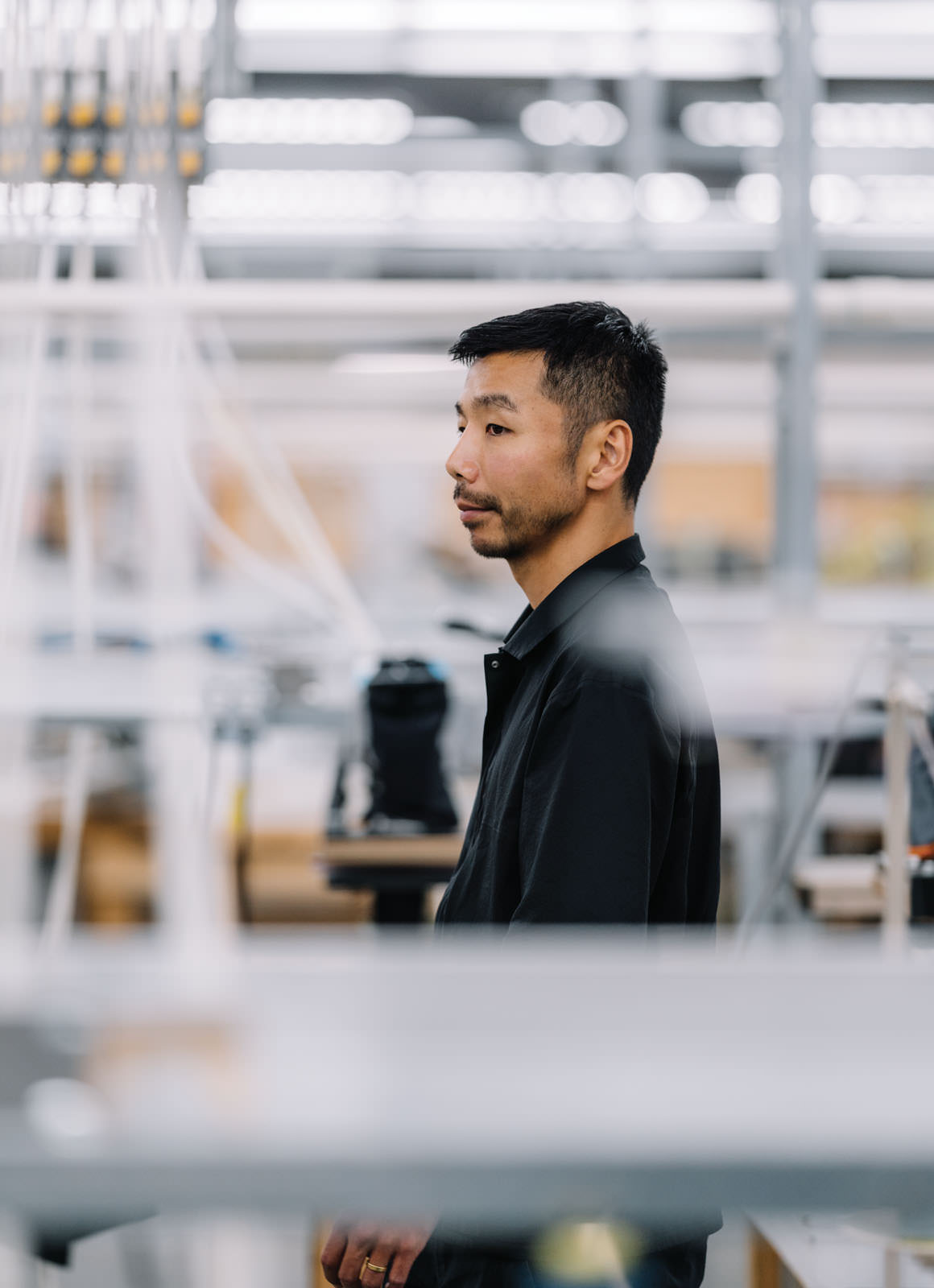
If Arc’teryx is meant to keep you dry on the mountain, Veilance is worn to your posthike lunch in the city: ergonomically designed, water-repellent pants in a relaxed cut for ease of movement, or field shirts cut from an airy, breathable fabric with utilitarian chest pockets. With Veilance, Kasuga cracked the code for everyday modular clothes designed for the urban environment. And his vision has resonated with fashion insiders and been picked up by discerning retailers such as Neighbour and Haven.
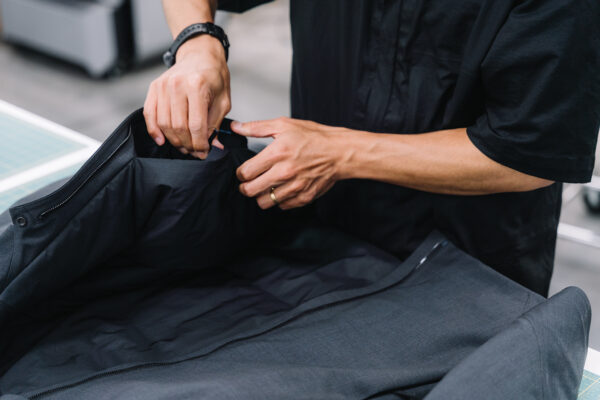
The role of a creative director at brands like Arc’teryx differs from that of, say, Louis Vuitton or Fendi. In the world of luxury fashion, the creative leads are largely figureheads and ambassadors responsible for keeping the brand culturally relevant and, most importantly, commercially successful. Arc’teryx, on the other hand, isn’t a capital-F fashion brand: it doesn’t stage seasonal runway shows or produce museum-worthy, fantastical clothes. (Arc’teryx has, however, dipped its toe in the fashion pond. A fall/winter 2021 collaboration with the German luxury brand Jil Sander is hot on the resale scene.) But as outdoor gear, or gorpcore, has become the de facto uniform for legions of stylish urbanites and outdoor enthusiasts alike, Arc’teryx has, knowingly or not, entered the style zeitgeist. Kasuga likens the brand’s shell jackets and down parkas to the “ultimate utilitarian” uniform of jeans, a T-shirt, and sneakers. “I think the similar thing, in a sense, is people are almost wearing Arc’teryx gear as a symbol to show that they value their freedom,” he says. “Even though maybe some of them don’t ever go outdoors, they’re inspired by what we stand for: that adaptation of this ultimate performance gear and how they are repurposing it in a different, extended use.”
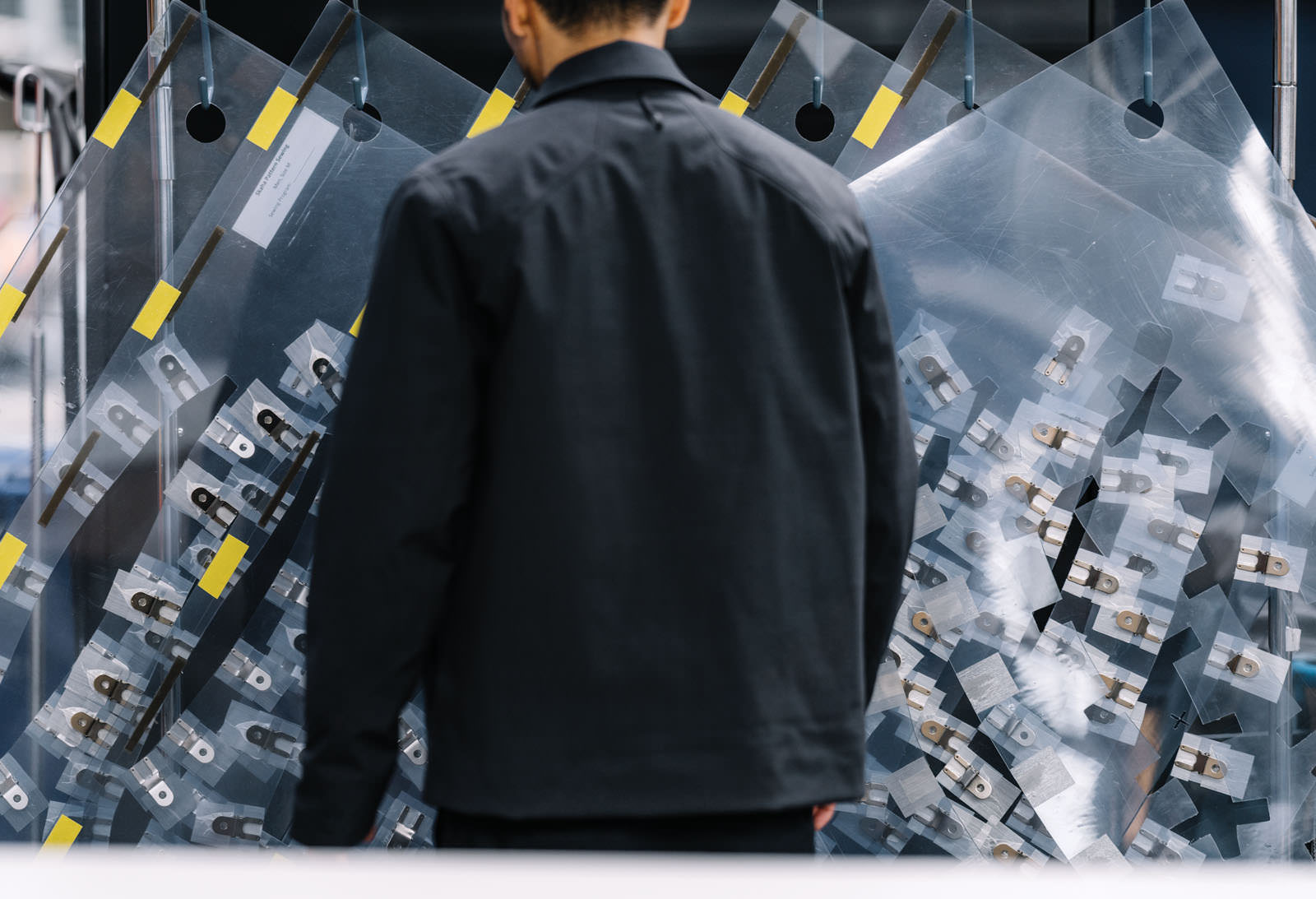
For Kasuga, design “is like complex problem solving. I enjoy connecting the dots between disparate design elements.”
In relentless social media–driven hype, buzz and noise detract from the actual clothes, especially the kind of technical, performance garments Arc’teryx specializes in. “Designers are also makers, in a sense,” Kasuga says. “So if you have an idea, you have to draft a pattern, and that’s how you can communicate the idea. At Arc’teryx, we often don’t start from sketches. We are also very hands on—we do make things, which is very different from most of the companies in the modern world. I feel like that’s the beauty of what we do.” Kasuga is clearly animated by the art and craft of clothes-making, especially the kind of lightweight, waterproof gear designed to protect wearers from the elements. “To me, design is like complex problem solving,” he says. “I enjoy connecting the dots between disparate design elements.”
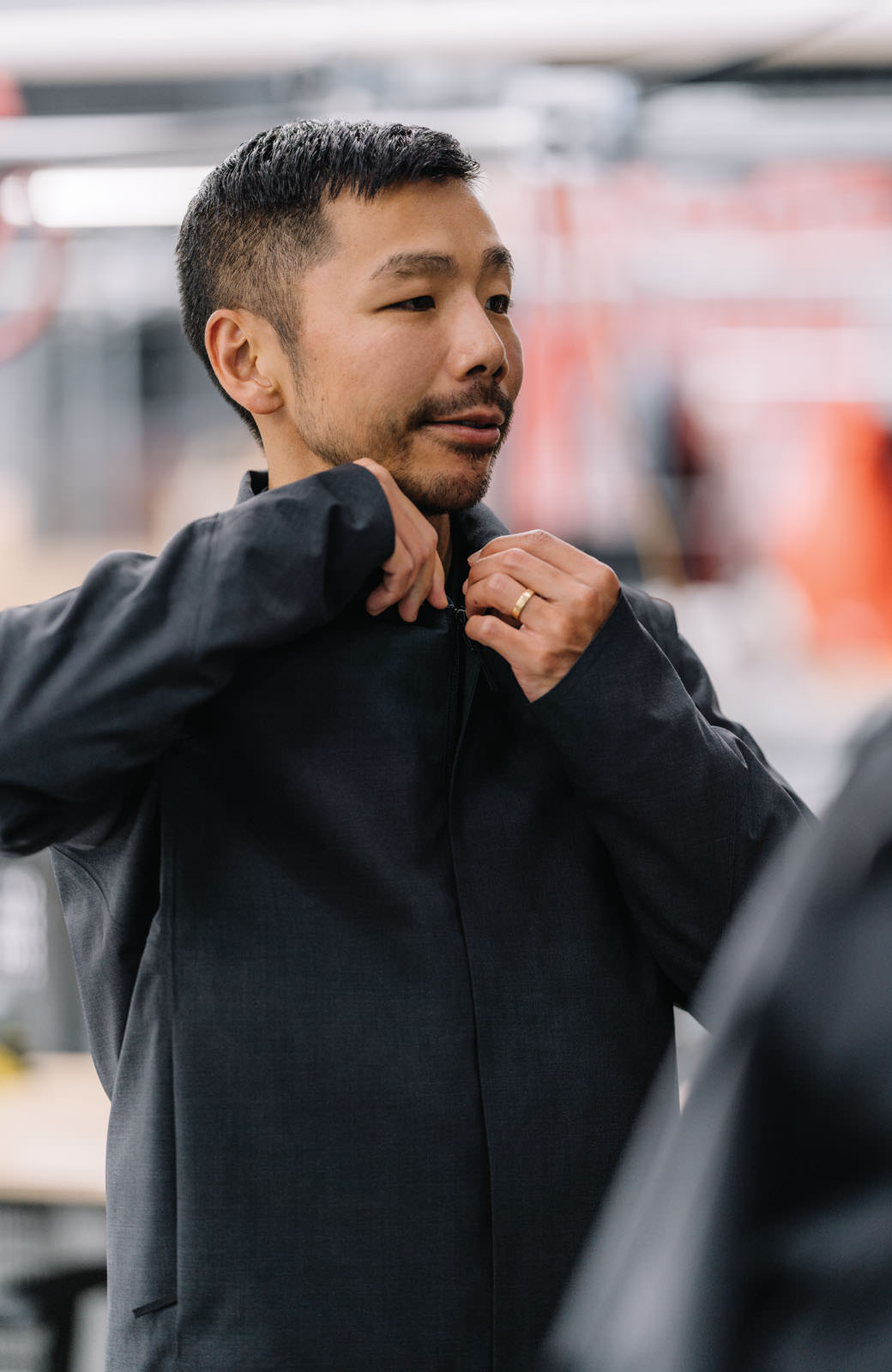
As excited as Kasuga is about product development and design, he’s most proud of his team. “It’s all about the people behind it,” he says. Kasuga and his colleagues are active, outdoorsy—the perfect focus group of climbers, trail runners, hikers, and skiers. “A lot of the designers participate in activities that they specialize in,” he notes. “You have to intuitively know what’s happening in the activity space but also have that design background. But the key thing is, we are working with our athletes very closely, we are getting feedback from athletes—what’s working, what’s not working—something that we don’t have in the line that they want to have, or finding that gap.” Kasuga, a soccer player, likens his approach to assembling a team: “Everyone has different talents. When you have the right chemistry, it just starts to create this team dynamic and synergistic result.”
At Arc’teryx, there is seasonal overlap between the collections, a consistency between the forms and materials. That foundation is important to customers who have built a relationship with the brand over time: the core forms are familiar and provide a launch pad for technical innovation and experimentation. It also means Kasuga and his team can plan collections as far ahead as spring 2026. Envision what the future looks like—for the wearer, and the world. So what does the future look like, according to Kasuga? “That’s a secret.”




